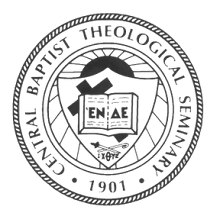Yesterday on Pentecost, I attended church with a dear
friend, and she inquired about how widespread the practice of following the
Christian calendar is among Baptists.
Well, as you know, there are quite a few varieties of Baptist; however,
I do think it is fair to say that there is growing interest in planning worship
around the rhythms of the great seasons of the church, beginning each year with
Advent.
When I was
a rural pastor in Kentucky, I introduced Advent to the congregation. The congregation enjoyed it so much,
especially the children, that they wanted to start it early the next year! Not so much with Lent; they wanted to shorten
it.
Does paying
attention to this cycle actually increase liturgy, i.e., the work of the
people? Actually, I think it does. Beyond the regular work of the choir,
musicians, and pastoral staff, observing the Christian year opens up space for
creative artistry that resides in the congregants. In my home church, liturgical colors and
visual representations of the Triune God celebrate the movement from Ascension
Sunday through Pentecost to Trinity Sunday.
This is the aesthetic work of laypersons, devoting their theological
imagination to enhancing the church’s worship.
It is a significant ministry.
It is not
easy for congregations to live into the truth that worship is the work of the
whole people of God, not just the persons who read texts, proclaim, offer
prayers of the people, and preside at the table. Worship is not something we observe, but it
is service. It is participatory, and
spectators are missing the point.
We usually
translate koinonia as fellowship or
communion; however, I prefer to translate it as participation, which suggests
that the Body of Christ cannot function fully without the engagement of each
part. Each brings a gift, and each
contributes to the whole.
This make
take the form of quiet intercession for those around you in your favorite pew;
it may be the offering you place alongside the resources of others; it may be
lifting your voice in congregational song; it may be the greeting or embrace
shared before and after the service; or, it may be as simple as the quiet sotto voce “yes, and amen” response to
the sermon or pastoral prayer.
Donald
Hustad described worship as “rehearsal for life.” Indeed, the patterns of giving and receiving
we practice in worship forms us for living justly and mercifully, a way of life
pleasing to God. Our faithful gathering beckons us to be the presence of
Christ, bearing his light in all the dark places.
Molly T.
Marshall
Central prepares leaders for seeking God, shaping church,
and serving humanity.





No comments:
Post a Comment